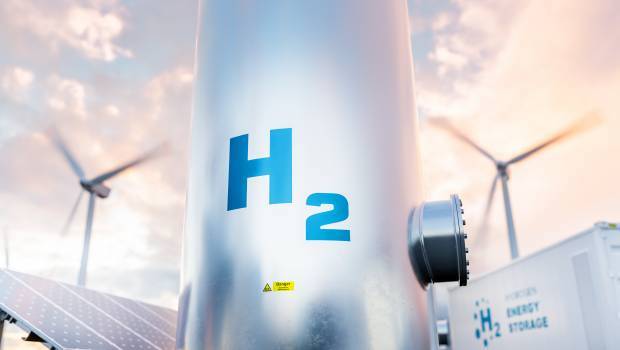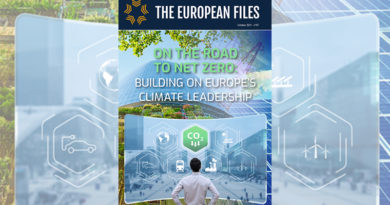
Taking advantage of the energy transition to produce low-carbon and green gas in Europe
As a counterpart to coal, which has become a big polluter, extremely controversial nuclear power, and renewable energy sources, with their intermittent nature which needs to be compensated for, natural gas has long appeared the obvious option for many European countries. It used to be relatively abundant given the numerous fields worldwide, and cheap. However, achieving carbon neutrality and the Russian invasion of Ukraine are forcing us to rethink our perception of gas and its role in the short, medium, and long term.
Gas accounts for about 25% of the total energy consumption in the EU, with 20% used for electricity generation and 39% for heat production. Dispensing with it immediately is impossible without seriously harming the European economy and social cohesion.
Yet, the new European commitments to achieving carbon neutrality by 2050 are condemning natural gas to virtual extinction and are calling for a firm development of renewable and low-carbon gases.
At the same time, Russia’s invasion of Ukraine and the need to emancipate ourselves from Russian gas have made the supply of natural gas even more strategic and valuable. We are therefore faced with two contradictory demands: finding natural gas in the short term and moving away from it in the medium term.
Numerous initiatives are underway to bring gas to Europe by every means possible: investments in LNG terminals, negotiations with producing countries, new filling goals for the natural gas storage facilities, gas interconnection projects rising from the ashes, new searches for deposits in the Eastern Mediterranean… So many initiatives which had been deemed unnecessary by many less than two years ago.
In this context, the French Energy Regulatory Commission (CRE) wishes to call for caution in the face of the “lock-in effects” that may result from hasty decisions that would fail to consider the real needs and interests of the consumers.
The current priority is storing and saving gas to get through next winter with limited risks. In this respect, I am delighted to see that the measures implemented in France in 2018 to regulate the underground storage are being generalised at European level and have made it possible for France to approach the 2021 winter with 95% full storage facilities.
The current filling campaign is unfolding at the same rate as in previous years.
The other short-term challenge is to diversify the supply sources to bring an end to our dependence on Russian gas. This new objective is disrupting the geopolitics of gas, traditionally dominated by flows from North to South and from East to West. However, new large-scale gas infrastructure projects, in particular pipelines, which would bring gas from the South to the North of Europe, such as the MidCat project between Spain and France, must be addressed with the utmost caution. Alternative, less costly and more efficient solutions, such as building LNG terminals near areas dependent on Russian gas, and strengthening the France-Germany interconnections, should be given greater priority.
This war on our doorstep also highlights our dependence on fossil fuel imports. Let us take advantage of the energy transition to produce a renewable gas on European territory that meets the needs of consumers and draws on local resources.
The development of biomethane has skyrocketed in France in recent years thanks to support measures and initiatives to adapt the networks, and under constant European law. In 2021, the production quantities injected into the gas network have doubled, with 4.3 TWh at the end of 2021, compared to 2.2 TWh at the end of 2020. The on-going projects waiting to be connected to the network amount to an annual production of 20 TWh.
The European objectives should be ambitious and common, but the means to achieve them should be appropriate and kept simple. Complex solutions, such as tariff exemptions for biogas at interconnection points or a reconsideration of the network tariff architecture, would be inefficient and costly.
Hydrogen will also be a key asset for decarbonising gas uses. Here again, we ought to be pragmatic. The availability of decarbonised hydrogen will depend on the electricity available to produce it. We will need to mobilise all the means of low-carbon electricity production, with renewable energies and nuclear power at the forefront, to cope with the sharp increase in electricity demands. But decarbonised hydrogen remains very costly: its use should be focused on industrial production areas, where it is the most useful. Mixing a mere 5% of hydrogen with natural gas would generate a net loss for the community. Relying on imports, up to 10 million tonnes as proposed by the European Commission, might just results in a renewed dependence. Finally, the hydrogen market is not yet mature. It would be premature and detrimental to innovation to set strict market rules as early as in 2030, especially regarding the links between network operators and hydrogen producers.
Gas decarbonisation in Europe entails immense challenges. The European Union must be the driving force behind the ambitions, a crucible of solidarity and the framework for economic efficiency. It is up to the national players to seize this opportunity, and create a relationship based on trust and subsidiarity.




